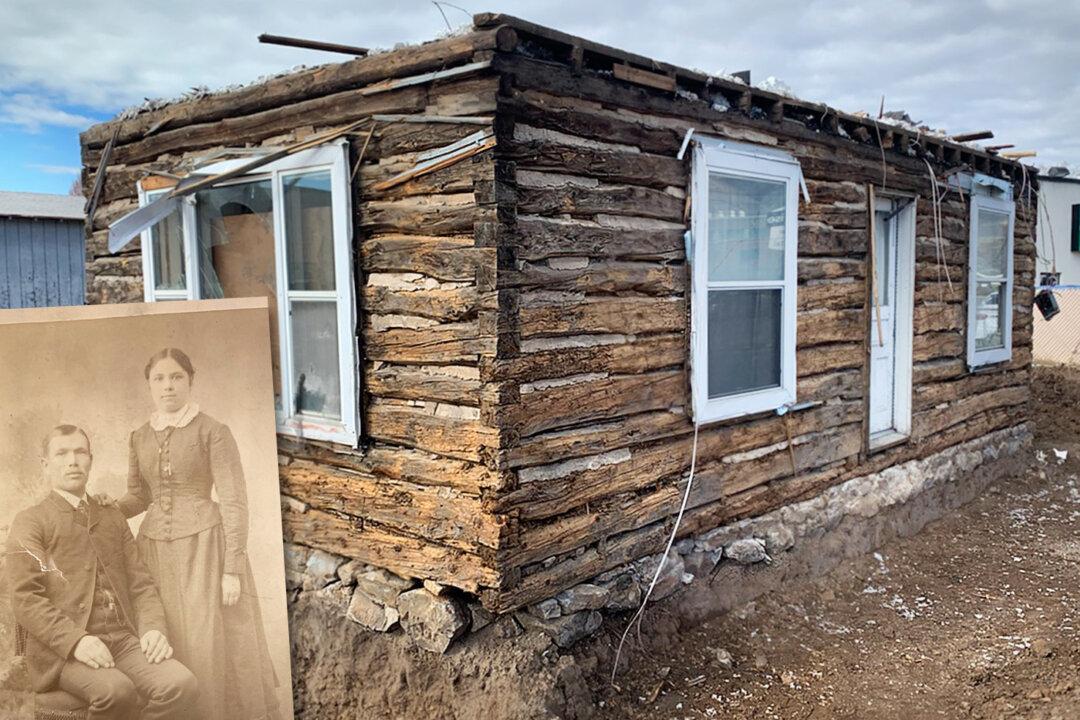An original hand-hewn homestead from the pioneer era was uncovered when demolition contractors peeled back the exterior of what was thought to be a modern bungalow in Orem, Utah.
The antique log house—featuring updates from the early- to mid-1900s—was last owned by the Shamadas, of Japanese descent, who once ran a fruit stand on the property; but even earlier, it was owned by the Hansons, a Swedish family—whose descendant Stan Hanson, 57, a sales rep from nearby Pleasant Grove, recalls driving by that cottage at 1400 Block and North State Street often.






